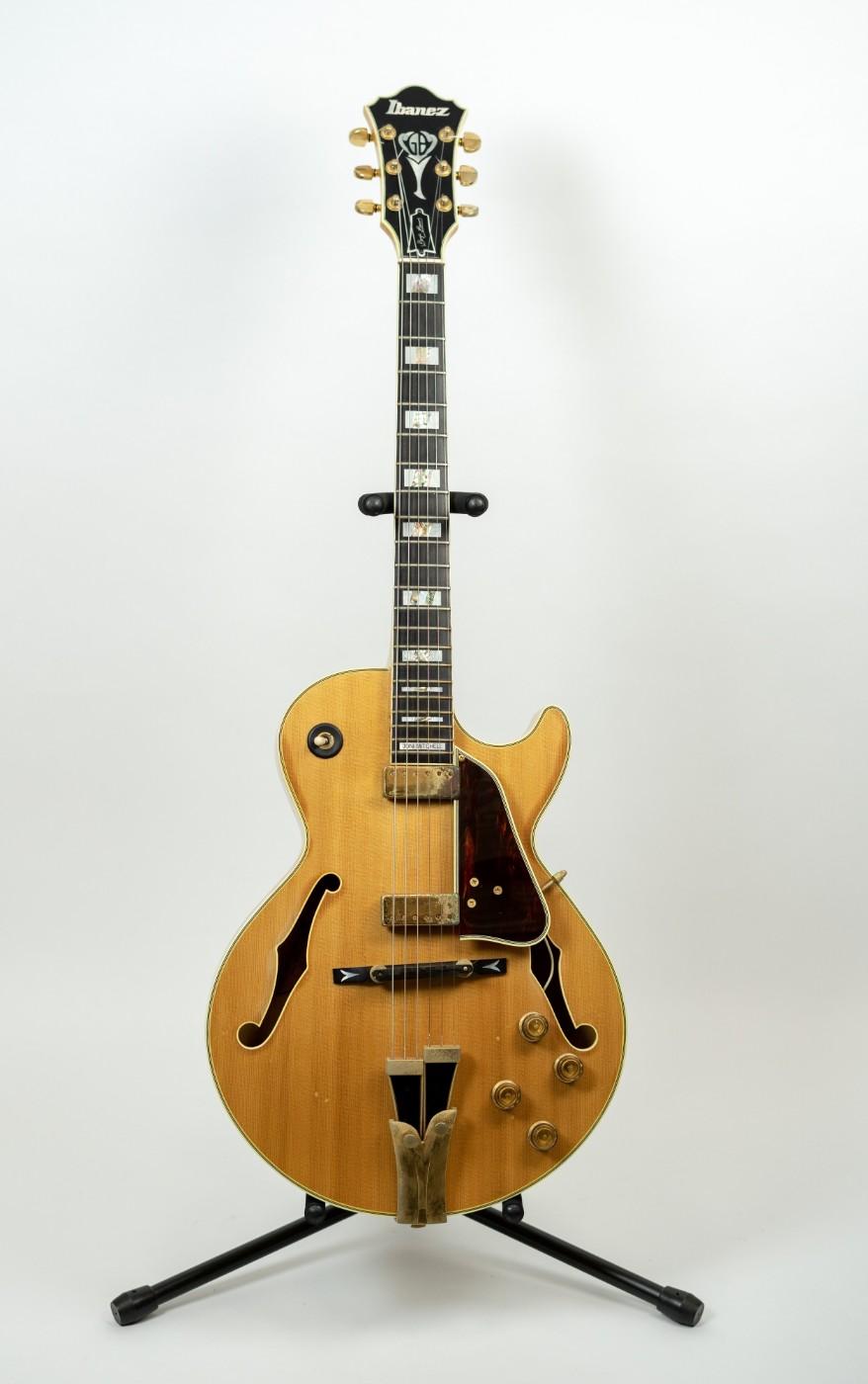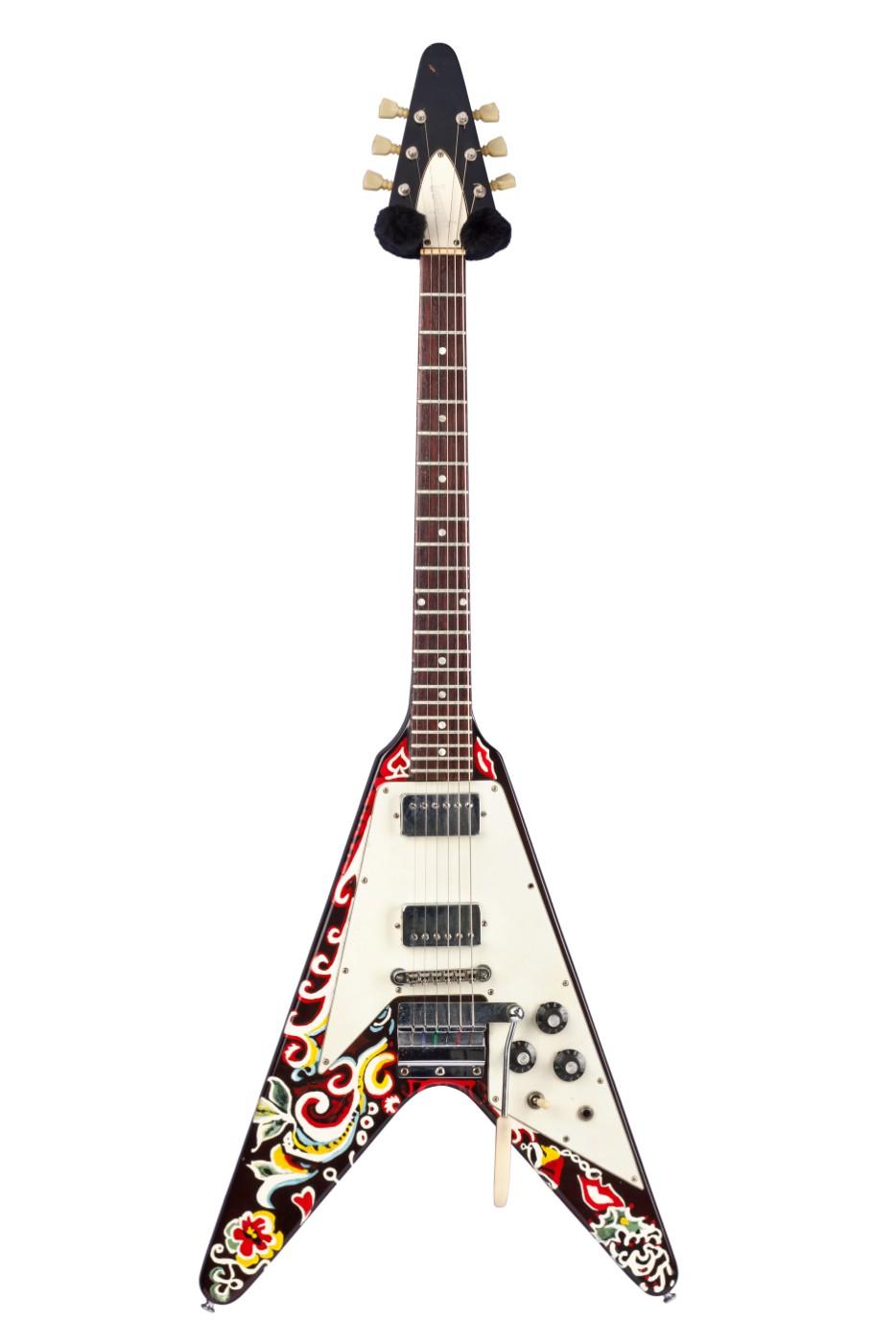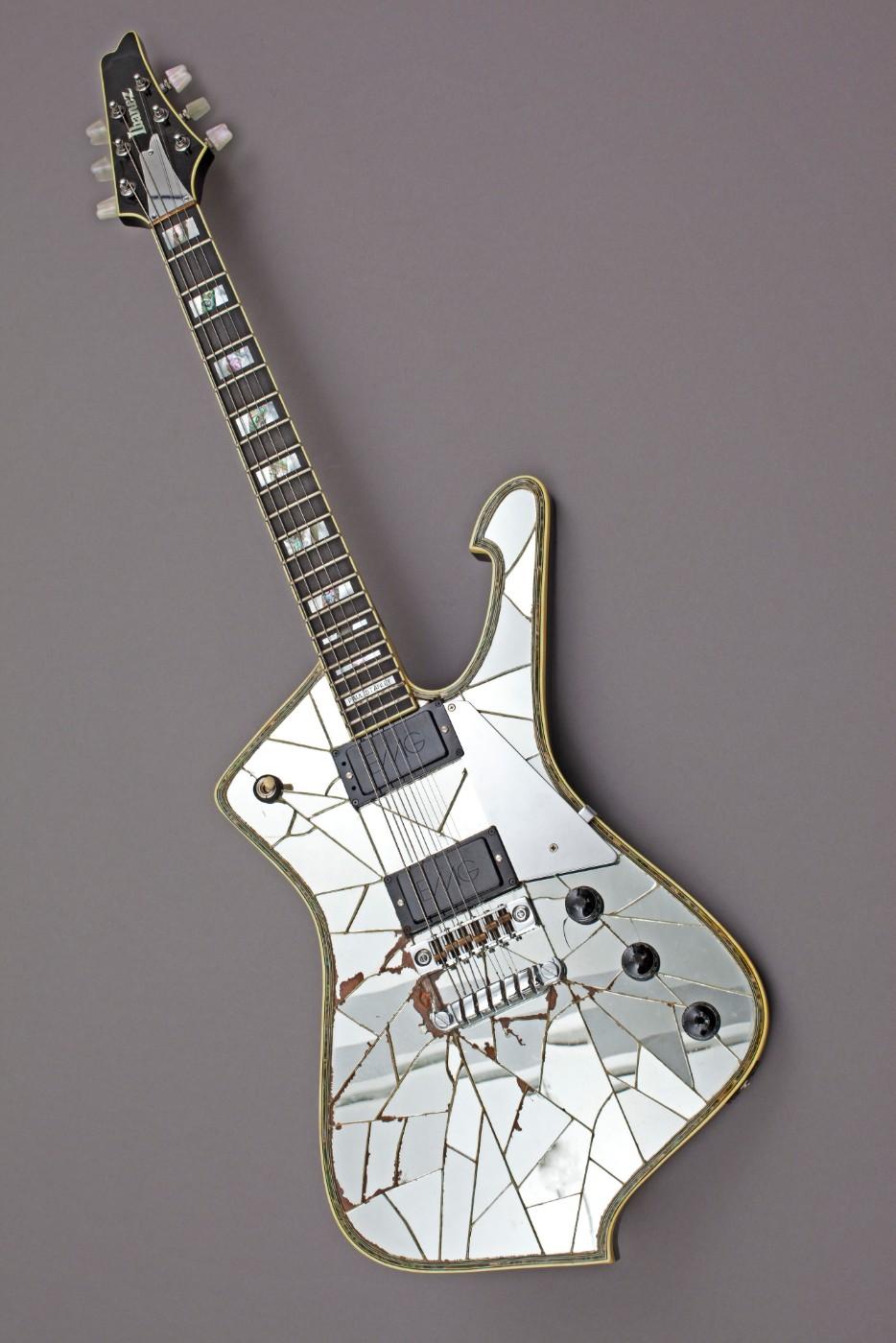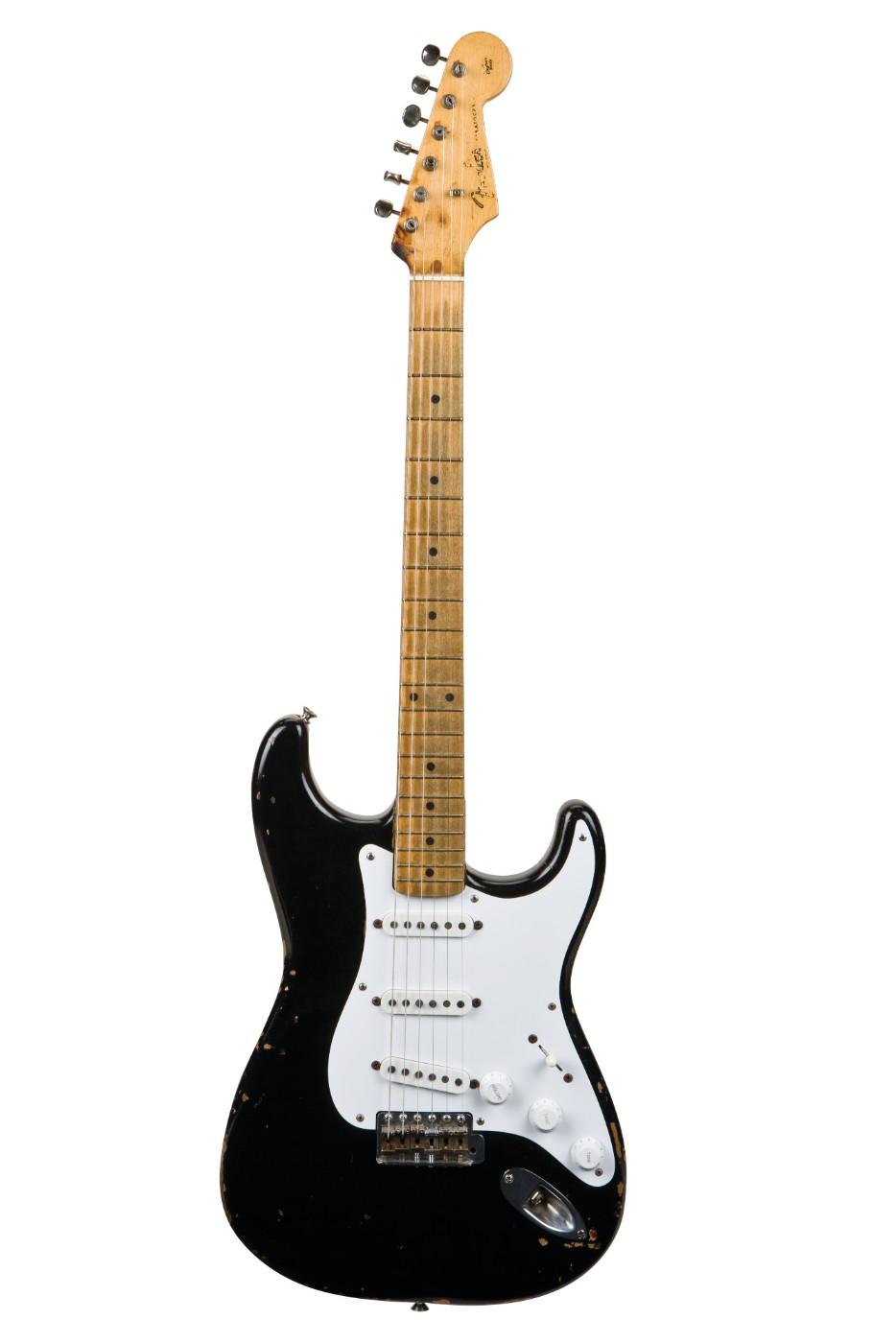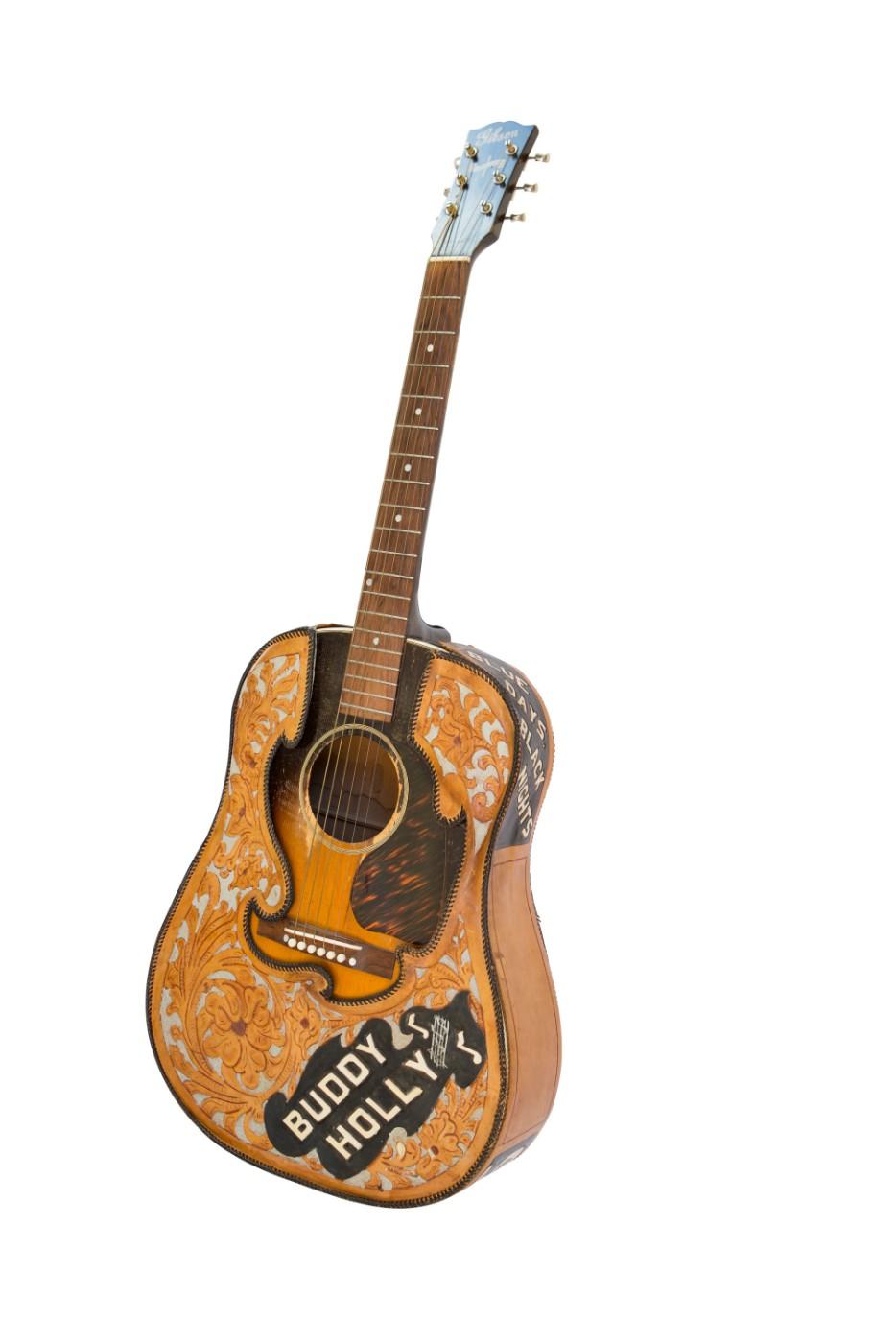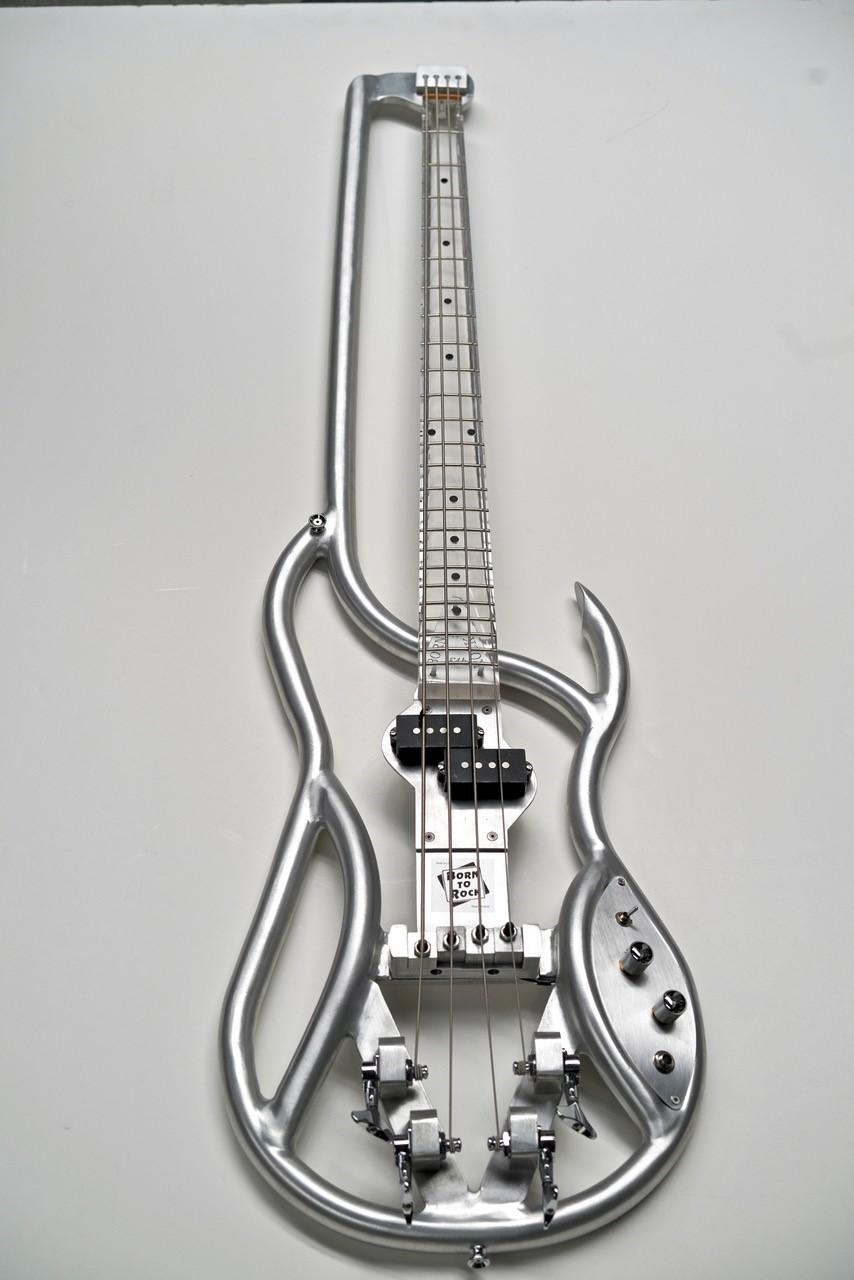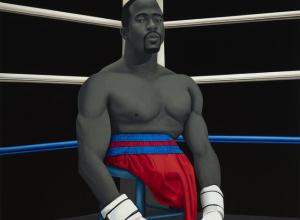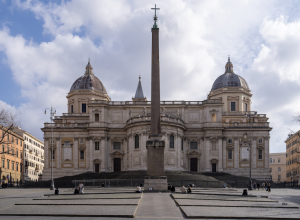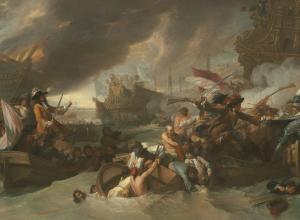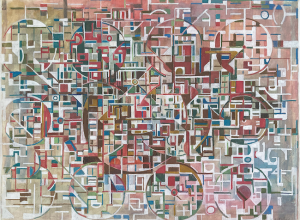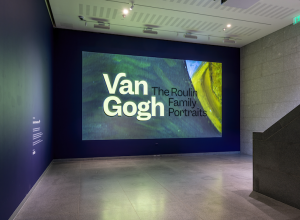The exhibition is the second collaboration between the Met’s Department of Musical Instruments and the Rock & Roll Hall of Fame. Between their two extensive collections and loans from private collections, Play It Loud seems to have an instrument from every big name in rock and roll history, and its most important moments. From the guitar Jimi Hendrix hand-painted with nail polish to the drum kit Ringo Starr played on The Ed Sullivan Show in 1964, Play It Loud has star-power to spare. A portion of the exhibit devoted to Guitar Gods emphasizes the special relationship between the guitarists that have revolutionized rock and roll and their instruments, many of which have become legends themselves.
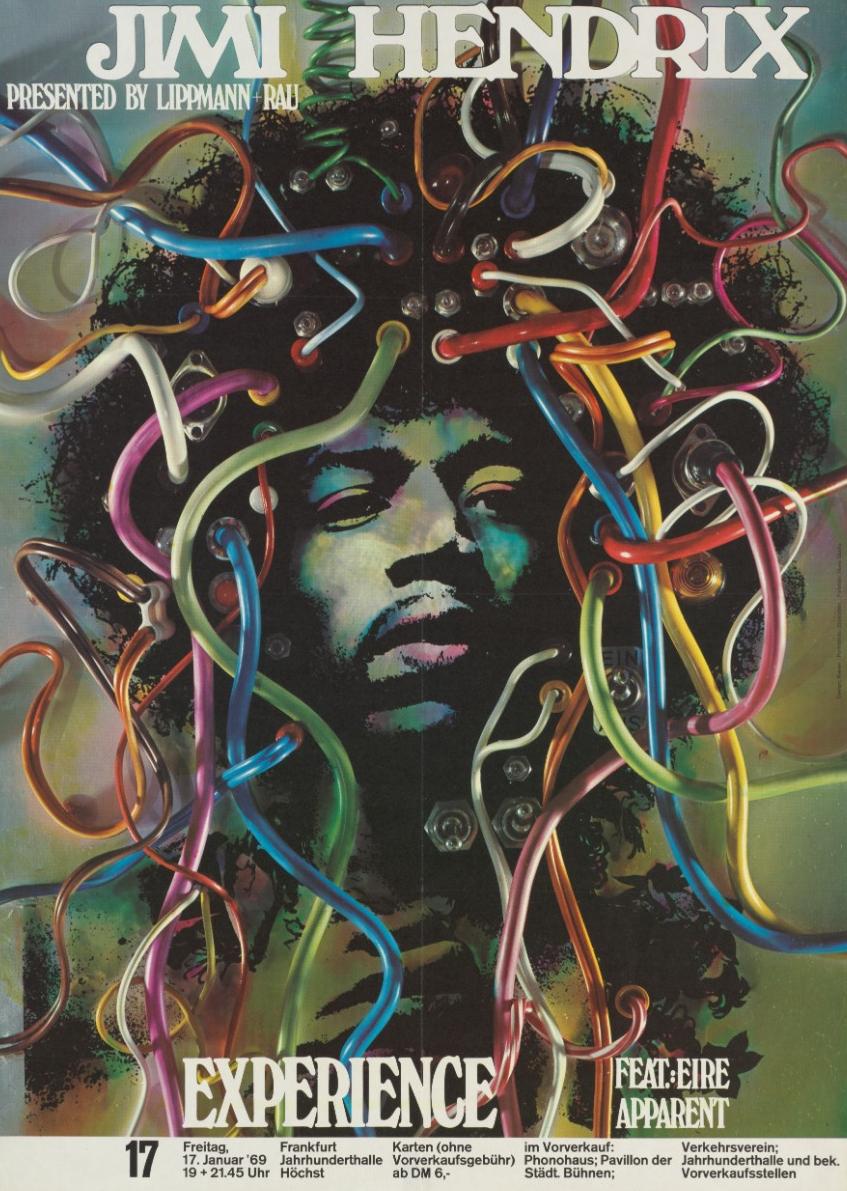
Poster by Günther Kieser promoting the Jimi Hendrix Experience’s European tour appearance with Eire Apparent at Jahrhunderthalle, Frankfurt, Germany, Friday, January 17, 1969.
This week, the Met debuts a large new exhibition sure to please the summer the crowds. Play It Loud: Instruments of Rock & Roll is the first exhibition at a major museum to tell the history of rock and roll through its instruments. And there are instruments aplenty: more than 130 of them, mostly guitars, dating to the roots of rock and roll, displayed alongside posters and costumes from rock history.
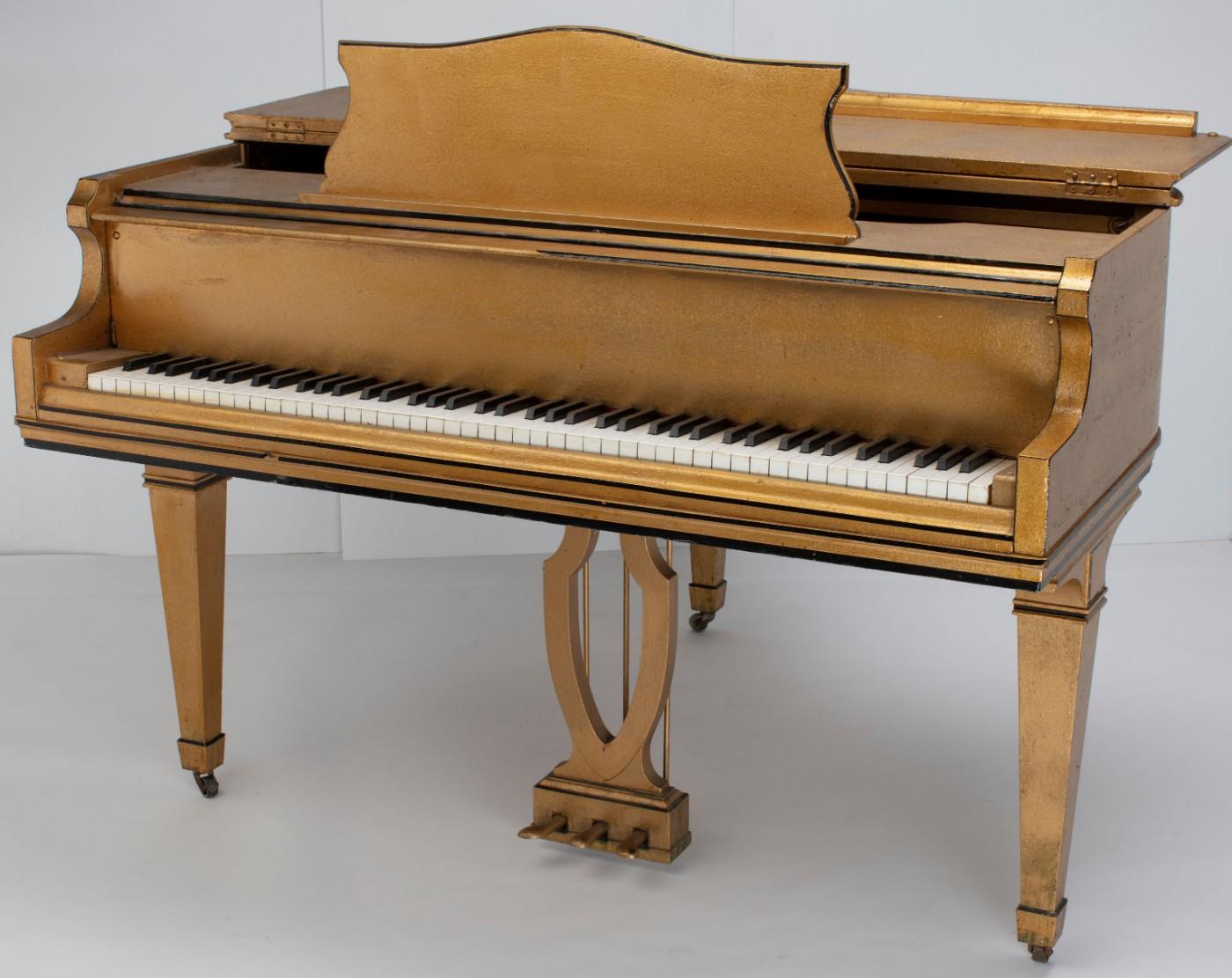
Gold Baby Grand Piano, George Steck & Co. ca. 1955. Wood, metal, ivory, ebony.
This instrument, painted gold, was Jerry Lee Lewis’ home piano from 1957 until 2017.
Play It Loud makes a strong case for the major role visuals play in rock music. A genre that has grown up alongside mass media, rock and roll is meant to be seen as well and heard, and the bravado this breeds is apparent, from Jerry Lee Lewis’ gold piano to Lady Gaga’s massive acrylic one. Instruments, though primarily functional, become a key element of an artist’s appearance, speaking as loudly as costuming and attitude.
While musicians may smash their guitars (or drums, or organs, depending on the case), Play It Loud honors these tools of the trade as the works of art they are. The limitations of and advancements in musical instruments influence those who play them and all music, not just rock and roll. A comprehensive, combined history of the instruments, their players, and the genre, Play It Loud shows the symbiotic relationships make up rock and roll.
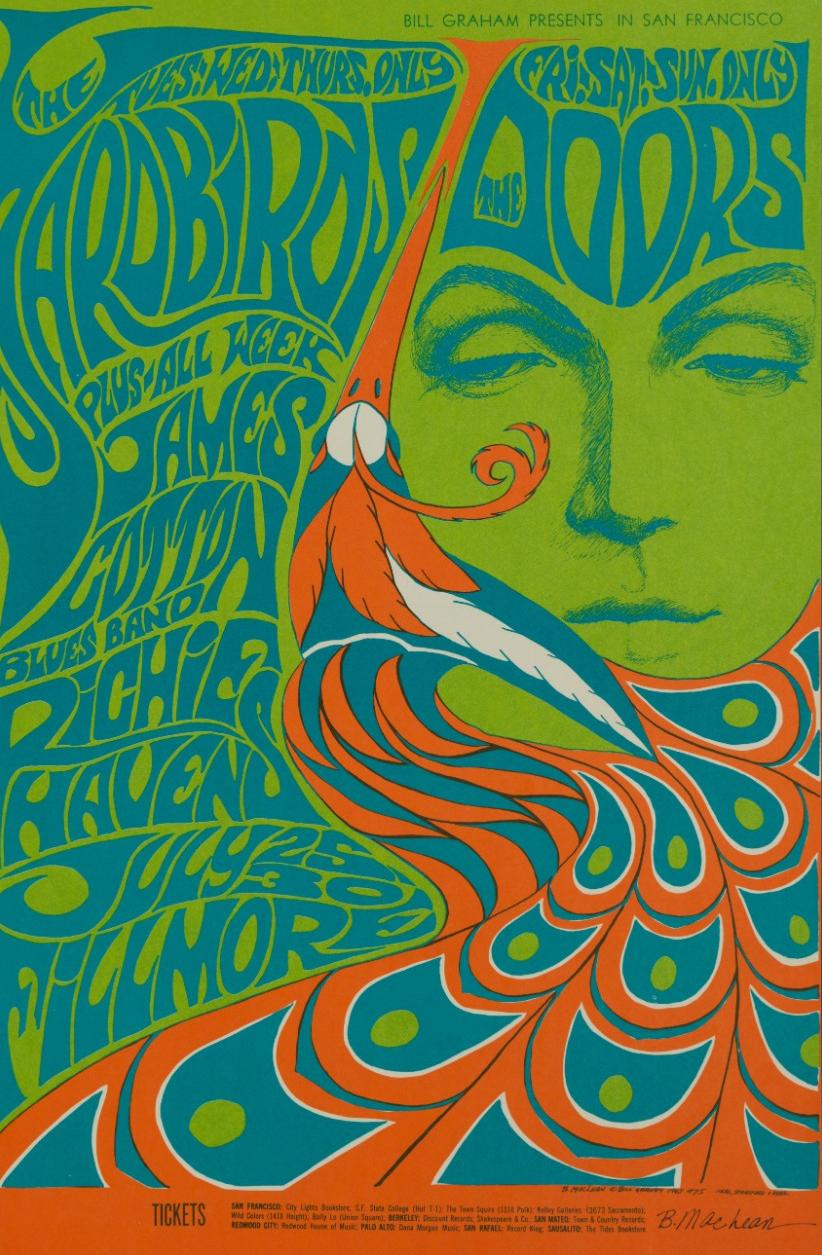
Poster by Bonnie MacLean promoting The Yardbirds’ and the Doors’ concerts at the Fillmore Series, San Francisco, CA, Tuesday, July 25 to Sunday, July 30, 1967.
With something for every fan of all that encompasses rock and roll, and plenty of dramatic and engaging museum displays, Play It Loud is sure to draw crowds. The exhibition is on view at the Met through October 1, 2019, and opens at the Rock & Roll Hall of Fame in Cleveland in November 2019.




